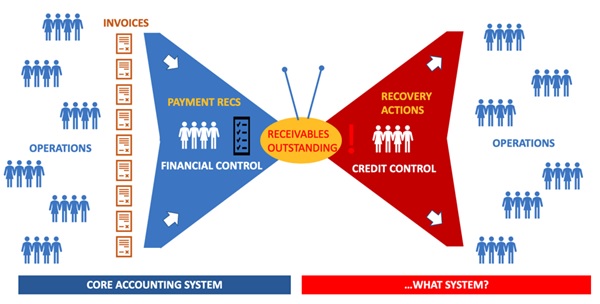Only a few weeks ago, 25,000 people were hired for NHS England’s Track and Trace program. In a digital world, where machine learning and AI have become familiar terms, the need for so many analog humans may come as a surprise.
The Tracking challenge is threefold: information collection, follow-up, feedback. This requires collaboration between systems and people.
Many corporate processes share similar characteristics (if not the sheer scale required to deal with an exponential threat). However, the technology used to support them can be imbalanced:
robust systems for information collection are often let down by poor tools to assist with follow-up and feedback.
As part of a series of posts on data collaboration, drawing from different use cases, I aim to explore this imbalance and describe how LiveDataset can help bridge the gap.
The Debt Recovery use case
When your business has so many customers as to have tens of thousands of payments outstanding at anyone time, chasing them will involve hundreds of people in many locations.
Enabling better collaboration means increased operational efficiency and healthier cashflows – a challenge we helped one of our clients, a global Insurance company, address.
The “butterfly picture” below illustrates the key actors and information flows. It has a strong left wing and a weak right wing – let’s explore how so.

The Left Wing
In a large organisation, a good core accounting system is a must.
The left wing of the picture shows how many contributors from all branches will be able to issue and feed invoices into it, and how few controllers will be responsible for performing payment reconciliations.
Invoices that pass their due date without full payment will automatically assigned to the Receivables Outstanding bucket, the end point of this straightforward, robust accounting process.
The Right Wing
Receivables Outstanding are also the starting point for recovery actions, the right wing of the butterfly. The picture emphasises two aspects:
- for the recovery process we need to go back out to the branches, where Operational staff have the local knowledge to follow-up with recovery actions;
- and then the system: “…what system?”- it is not uncommon to find a plethora of local spreadsheets rather than a collaborative platform provided from the centre.
What platform then?
Debt recovery is one (of many) operational processes that is informed by the Books & Records but is not an accounting process.
As such, we should not expect it to be covered within the core accounting system; it requires a separate module or platform accessible to a different group of people: those accountable for chasing up based on agreed priorities.
The overall aim is faster recovery of funds and operational cost optimisation through transparency and data-driven efficiency.
Assigning and tracking actions and feedback fits the “Service Management” paradigm, for which many products exist (Buy). The ideal solution is the one that would make the most of your successful existing processes and which would be closely integrated with the accounting system (Build).
Buy or Build ultimately depends on how much customisation is required (now and in the future) and how cost-effectively it can be achieved (now and in the future).
“Build as a Service”?
…There’s an interesting idea! Technology for constantly evolving organisations needs to be flexible. Whatever solution is chosen, it will require an ongoing partnership between the product team (internal or external) and the business.
The LiveDataset way
LiveDataset is a data collaboration platform perfectly suited to support tracking processes, of which Debt Recovery is an example. Delivered as a service, every solution can be adapted on demand to grow in functionality or scale.
Here is an animated presentation of one of the possible configurations in this context:
If you would like to find out more about data collaboration with LiveDataset, contact us today!
